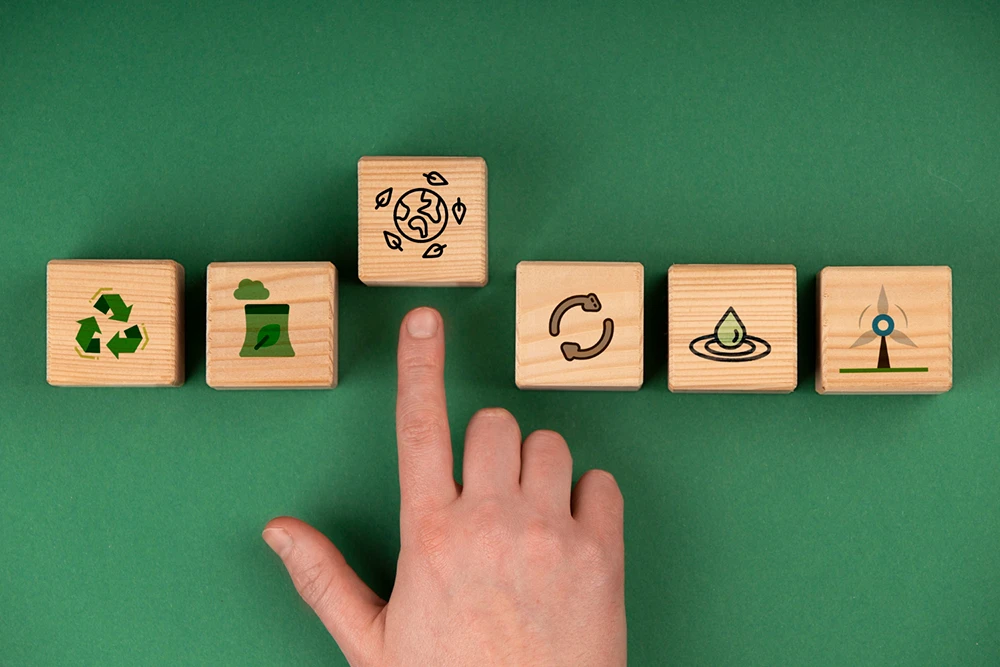Digital technology is everywhere. And with the growth of connected objects, its environmental impact is skyrocketing.
Reducing this impact is no longer an option: it is an industrial imperative.
Companies that design connected objects must now incorporate sustainability into their designs from the outset.
This was the strong message conveyed at the conference ‘Eco-design, LCA: how to reduce the environmental impact of IoT projects?’, organised at SIDO 2025.
LCA: measure before acting
Before improving, you have to measure.
Life Cycle Assessment (LCA) quantifies the complete environmental impact of a product: from resource extraction to end of life.
It is not limited to CO₂ emissions.
LCA takes into account more than 16 indicators: water consumption, energy, rare metals, waste, transport, use, recyclability.
It is a comprehensive, objective and internationally recognised approach (ISO 14040 and 14044 standards).
In the world of IoT, life cycle analysis is essential.
Sensors, electronic boards and batteries generate a significant environmental footprint.
Studies show that nearly 80% of the total impact of a connected product is linked to its manufacture.
Thanks to LCA, companies can identify levers for action:
- Extend the lifespan,
- Reduce unnecessary components,
- Choose more virtuous materials,
- Re-think packaging or logistics.
👉 Discover the 5 key steps in the LCA of an electronic product
Successful IoT eco-design: best practices
Eco-design is based on a simple principle: act before you produce.
Every decision made upstream influences the final footprint of the product.
1. Design for durability
Extending the lifespan of an object reduces its overall impact.
This requires modular design, replaceable parts and software updates.
A repairable or reusable product is more environmentally friendly than a disposable product.
At Altyor, our teams incorporate sustainability right from the mechanical and electronic design phase.
Each component is assessed according to its performance, availability and environmental footprint.
👉 Industrial design office: designing sustainable products
2. Choose responsible materials
Raw materials account for a large part of a product’s environmental impact.
The use of recycled plastics, reused metals or low-carbon components can significantly reduce this impact.
Altyor incorporates up to 87% recycled plastic into its products.
The company is also working on the traceability and recyclability of materials to ensure a more virtuous life cycle.
These choices are accompanied by logistical optimisation: favouring short supply chains, limiting unnecessary transport and pooling production flows.
👉 Electronic components: towards responsible and sustainable sourcing

3. Measure, compare and adjust
Eco-design is not just theory.
LCA is becoming a real industrial management tool.
It allows different design configurations to be tested and proves, with figures to back it up, the environmental improvements achieved.
Once the points of impact have been identified, the engineering teams can adapt the design to correct them.
This involves making specific choices regarding materials, design, assemblies and processes.
Based on the principles of Design for Manufacturing (DFM), this approach involves designing a product that is easier to manufacture, assemble and recycle.
At Altyor, DFM is used as a lever for implementing LCA results, ensuring a product that is both eco-designed and industrially efficient.
Thanks to this evidence-based approach, companies can promote their CSR efforts and justify their commitments to their customers and partners, while strengthening their competitiveness.
👉 What is design for manufacturing?

How do you perform a life cycle assessment (LCA)?
We can help you calculate and analyze your product’s ecological footprint using LCA.
Life cycle assessment is the starting point for understanding your product’s impact on the environment. To help you understand the ins and outs of LCA (Life Cycle Assessment), we’ve put together 14 answers that will shed some light on the subject.
The Altyor approach: sustainable innovation, from design to production
For over 30 years, Altyor has been supporting companies with their electronics and IoT projects.
Today, we fully integrate eco-design, LCA and DFM (Design for Manufacturing) into our industrial approach.
This approach makes it possible to reconcile environmental performance with industrial efficiency.
DFM aims to design products that are easy to manufacture, assemble and maintain, while reducing material waste and energy consumption.
“A well-designed product is easier to manufacture, more durable and more profitable.”
LCA and DFM complement each other:
- LCA measures and identifies environmental levers.
- Design for Manufacturing translates these levers into concrete design decisions (choice of processes, simplification of assemblies, optimisation of moulds or circuits).
Each project follows a rigorous process:
- Initial environmental assessment via LCA.
- DFM optimisation to limit manufacturing constraints and maximise efficiency.
- Selection of sustainable materials and processes.
- Circular production with recycled materials and energy management.
- Post-production monitoring and recyclability.
Thanks to this synergy between LCA + DFM, Altyor offers its customers controlled, sustainable and economically optimised production.
Get a quote tailored to your project!
Taking action from the design stage onwards
Eco-design is not a constraint: it is a winning strategy.
It enables the creation of high-performance, compliant and responsible products.
LCA provides an objective measure that transforms commitments into concrete results
With its dual expertise in IoT engineering and sustainable development, Altyor helps companies design differently.
From prototype to production, the company puts sustainability at the service of performance.
🎯 Ready to assess the environmental impact of your connected products?
👉 Contact Altyor’s experts to integrate eco-design into your projects.
